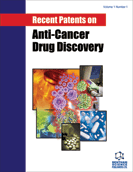
Abstract
A large number of mostly recent reports show enhanced expression of the multi-functional protein nucleolin (NCL) on the surface of activated lymphocytes, angiogenic endothelial and many different types of cancer cells. Translocation of NCL at the external side of the plasma membrane occurs via a secretory pathway independent of the endoplasmic reticulum-Golgi complex, requires intracellular intact actin cytoskeleton, and seems to be mediated by a variety of factors. Cell surface NCL serves as a binding partner of several molecules implicated in cell differentiation, adhesion, and leukocyte trafficking, inflammation, angiogenesis and tumor development, mediating their biological activities and in some cases, leading to their internalization. Accumulating evidence validates cell surface NCL as a strategic target for treatment of cancer, while its property of tumor-specific uptake of targeted ligands seems to be useful for the development of non-invasive imaging tools for the diagnosis of cancer and for the targeted release of chemotherapeutic drugs. The observation that cell surface NCL exists in complexes with several other proteins implicated in tumorigenesis and angiogenesis suggests that targeting cell surface NCL might trigger multi-inhibitory effects, depending on the cell type. This review summarizes papers and patents related to the redistribution and the biological functions of cell surface NCL, with emphasis on the potential importance and advantages of developing efficient anti-cell surface NCL strategies.
Keywords: Angiogenesis, cancer, cell surface nucleolin, growth factors, ligand specific internalization, targeted delivery approaches.
 192
192


























